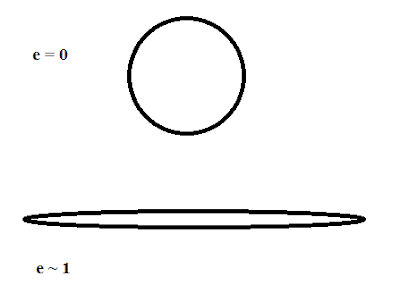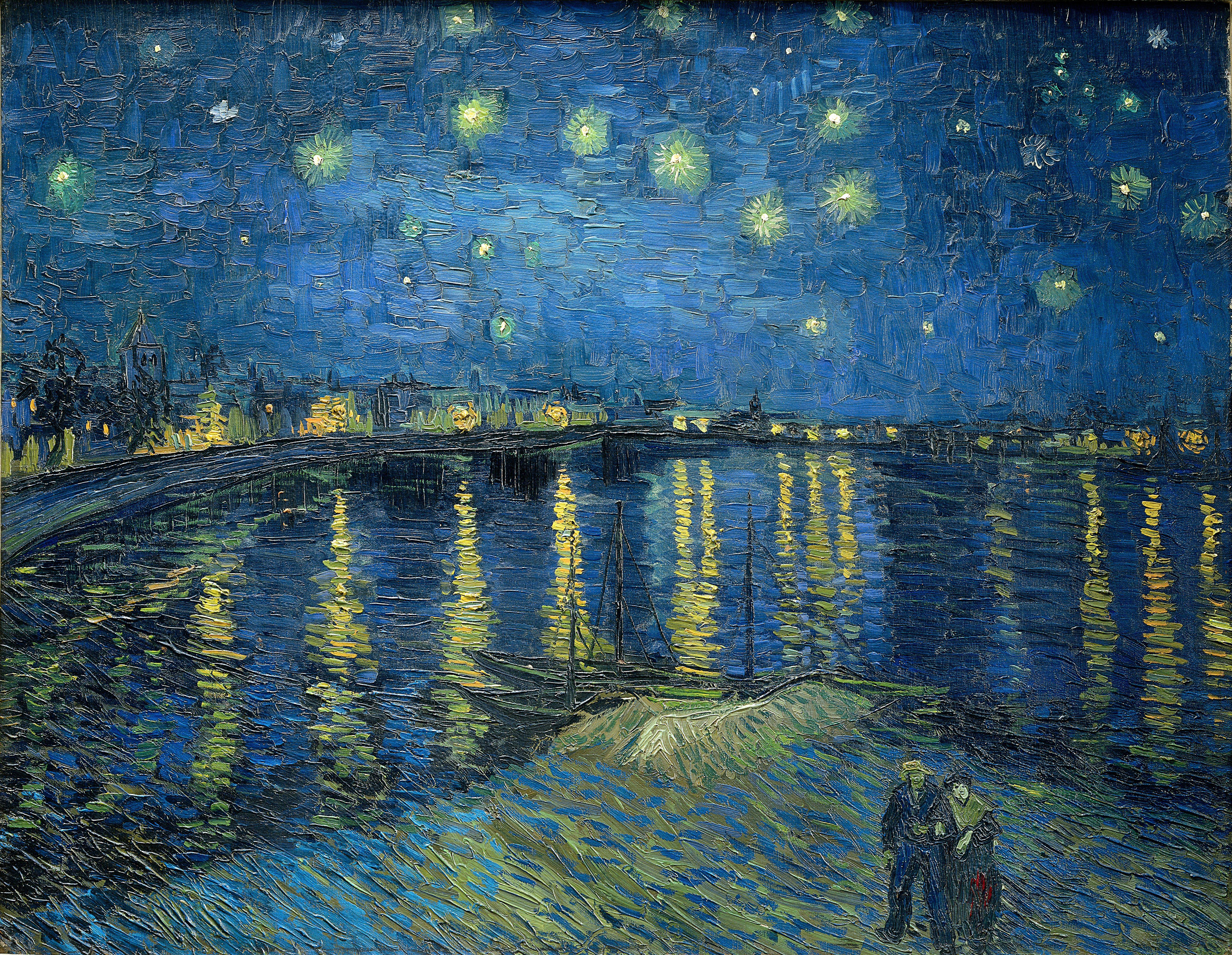We are bounded in a nutshell of Infinite Space: Week 9: Worksheet #16:
Problem #1: Stars from Molecular Clouds
1. Forming Stars Giant molecular clouds
occasionally collapse under their own gravity (their own “weight”) to form
stars. This collapse is temporarily held at bay by the internal gas pressure of
the cloud, which can be approximated as an ideal gas such that \(P = nkT\), where n is the number density (\(cm^{-3} \)) of gas particles within a cloud of mass M comprising particles of mass \(\bar{m}\) (mostly hydrogen molecules, \(H_2\)), and k is the Boltzmann
constant, \(k = 1.4 \times 10^{16} erg K^{-1} .
(a) For a spherical molecular cloud of mass M,
temperature T, and radius R, relate the total thermal energy to the binding
energy using the Virial Theorem, recalling that you used something similar to
kinetic energy to get the thermal energy earlier. (HINT: a particle moving in
the \(i^{th}\) direction has \( E_{thermal} = \frac{1}{2} mv_i^2 = \frac{1}{2} kT\). This fact is a consequence of a useful
result called the Equipartition Theorem.)
(b) If the cloud is stable, then the Virial
Theorem will hold. What happens when the gravitational binding energy is
greater than the thermal (kinetic) energy of the cloud? Describe in words.
(c) What is the critical mass, \(M_J\) , beyond which the cloud collapses? This is known as the “Jeans Mass.”
Assume a cloud of constant density \(\rho\).
(d) What is the critical radius, \(R_J\), that the cloud can have before it collapses? This is known as the
“Jeans Length.”
(e) The time for a self-gravitating cloud to
collapse is often estimated by the “free-fall timescale,” or the time it would
take a cloud to collapse to a point in the absence of any resistance. We’ll
derive this timescale and use it to re-derive the Jean’s Length. Consider a
test particle in an
\(e \approx 1\) orbit around a point
mass equal to the cloud’s mass. The time it takes for a point mass to move from
R to the central mass, or half an orbit, is equivalent to the free-fall
timescale. Recall that \(e = 0\) would
be a circular orbit, and make sure you can draw what an \(e \approx 1\) orbit looks like. Use \(M = \frac{4}{3}
\pi r^3\] to frame this expression in terms of a single variable—the average
density, \(\bar{\rho}\). \[t_{ff} = \sqrt{\frac{3\pi}{ 32G\rho}}\]
(f) If the free-fall timescale of a cloud is
significantly less than a “dynamical timescale”, or the time it takes a
pressure wave (sound wave with speed \(c_s\) )to
traverse the cloud, the cloud will be unstable to gravitational collapse. Use
dimensional analysis to derive the relationship between the sound speed, the cloud’s
pressure, P, and the mean density.
Then derive the dynamical timescale, the time it takes a pressure wave to cross
the cloud of radius R.
(g) Equate the free fall time to the sound
crossing time and solve for the maximum R. This maximum is Jeans Length, \(R_J\) , which we derived previously. Use the ideal gas law to ascertain that
the two equations for Jeans length matches, at least if we neglect constants of
order unity due to assumptions of the system’s geometry.
(h) For simplicity, consider a spherical cloud
collapsing isothermally (constant temperature, T) with initial radius \(R_0 = R_J\) . Once the cloud radius reaches \(0.5 R_0\), by what fractional amount has \(R_J\) changed? What might this mean in terms of the number of stars formed
within a collapsing molecular cloud? (This is the concept of fragmentation.)
a. From the
Virial Theorem, we know that: \[ K = -\frac{1}{2} U,\] which then turns into
the thermal energy in the three degrees of freedom for the movement of
particles in space, and the potential energy is described by the gravitational
potential of a particle: \[ \frac{1}{2} kT +\frac{1}{2} kT+\frac{1}{2} kT =
-\frac{1}{2} \frac{-GMm}{R},\] which
simplifies down to \[ 3kT = \frac{GMm}{R},\] the relationship of thermal and
gravitational energy.
However,
the system should be solved for the entire system of particles, which turns
into: \[ 3NkT = \frac{3}{5} \frac{GM^2}{R},\] from the addition of the N particles and a precious derivation we
have done to describe the gravitational potential of a system of particles,
becoming: \[ 5NkT = \frac{GM^2}{R}.\]
b. Furthermore,
if we compare the two sides of the equation, and ask ourselves what would
happen if the left side were less than the right: \[ NkT < \frac{1}{5}
\frac{GM^2}{R} ,\] we see that this is
actually pressure and gravity, and thus the conclusion of having overpowering
gravity becomes clear: \[ P < G,\] the system would collapse.
c. Now,
knowing how the total number of particles is the same as the mass of the enture
system over the mass of an individual particle, we see: \[\frac{M_J}{\bar{m}} =
N ,\] as well as knowing that the density of a system can be described as: \[
\rho = \frac{M_J}{\frac{4}{3} \pi R_J^3},\] and consequently as \[ R_J =
\left(\frac{M_J}{\frac{4}{3} \pi \rho}\right)^{1/3}. \] From these definitions
and the understanding of the Jean’s Mass, we can rewrite the above equation
from (a): \[ NkT = \frac{1}{5} \frac{GM_J ^2}{R_J} \] \[ \frac{M_J}{\bar{m}}
kT = \frac{1}{5} \frac{GM_J ^2}{\left(\frac{M_J}{\frac{4}{3} \pi
\rho}\right)^{1/3}},\] and so we have this turn into: \[ \frac{5kT}{\bar{m}} = GM_J \times
\frac{\left(\frac{4}{3} \pi \rho\right)^{1/3}}{M_J^{1/3}},\] and is
continuously simplified till we have: \[ \frac{5kT}{\bar{m}} = GM_J ^{2/3}
\left(\frac{4}{3} \pi \rho \right)^{1/3},\] the accurate representation of how
we determine the Jean’s Mass: \[M_J = \left(\frac{5kT}{(4\rho)^{1/3} G \bar{m}
}\right)^{3/2}\]
d. Next, we
find the critical radius at which any greater the molecular cloud would begin
to collapse. Starting off from the same principles from the derivation of
Jean’s Mass, but now we use the density to solve for \(R_J\) : \[ NkT = \frac{1}{5}
\frac{GM_J ^2}{R_J}\] \[N = \frac{M_J}{\bar{m}}\] \[ \frac{M_J}{\bar{m}}kT =
\frac{1}{5} \frac{GM_J ^2}{R_J}\] \[ R_J = \frac{1}{5} \frac{GM_J \bar{m}}{kT}\]
\[ \rho = \frac{M_J}{\frac{4}{3} \pi R_J^3},\] now we convert the mass into
terms of the Jean’s Length: \[ M_J = \rho \cdot \frac{4}{3} \pi R_J^3 ,\] and
now have: \[ R_J = \frac{1}{5} \frac{G(\rho \cdot \frac{4}{3} \pi
R_J^3)\bar{m}}{kT},\] which becomes: \[ R_J = \left(\frac{15 kT }{ 4 G \rho \pi
\bar{m}}\right)^{1/2},\] and can be quickly simplified to reduce the amount of
constants till we have: \[ R_J = \left(\frac{5 kT }{ 4 G \rho
\bar{m}}\right)^{1/2},\] the correct equation for finding the critical length
of a molecular cloud.

So, the
time is precisely, in terms of other orbital systems: \[t_{ff} = \frac{P}{2},\] which from Kepler’s
third law we can rewrite as: \[ t_{ff} = \frac{1}{2} \left(\frac{4\pi^2
a^3}{GM}\right)^{1/2},\] and now simplifying the system we see how: \[ t_{ff}= \frac{1}{2} \frac{2\pi
a^{3/2}}{(GM)^{1/2}}\] \[ t_{ff} = \frac{\pi a^{3/2}}{(GM)^{1/2}}.\] Next, we
must describe the mass in terms of the density of the molecular cloud and the
distance the free fall is traveling (R). \[ M = \frac{4}{3} \pi R^3 \rho,\]
furthermore, the semi major axis of the orbit then becomes only a portion of
the total distance covered, precisely: \[ a = \frac{R}{2},\] and then all this
information is once again placed within our larger equation: \[ t_{ff} = \frac{\pi
\left(\frac{R}{2}\right)^{3/2}}{G^{1/2} \cdot \left(\frac{4}{3} \pi R^3 \rho
\right)^{1/2}},\] which reduces down to: \[ t_{ff} = \left(\frac{\pi^2
\frac{1}{8}}{G \frac{4}{3} \pi \rho}\right)^{1/2},\] and we thus have the free
fall time for the collapse of a molecular cloud: \[ t_{ff} =
\left(\frac{3\pi}{32 G \rho}\right)^{1/2},\] identical to what the question
asks for.
f. Now,
considering the way information propagates within a molecular cloud, at the
speed of “sound” or vibrational energy: we know its dimensions are: \[ c_s \sim
\frac{Dist.}{time},\] and we can relate this to other properties of the cloud
through dimensional analysis: \[ P \sim \frac{\frac{Mass\cdot
Dist.}{time^2}}{Dist.^2}\] \[ P = \frac{M}{t^2 D}\] \[ \rho =
\frac{Mass}{Dist.^3}.\] Now that we know these dimensions for pressure and
density, there is a way to relate them so they produce a speed. This is by: \[
c_s = \sqrt{\frac{P}{\rho}} ,\] which we
test through dimensional analysis: \[ \frac{D}{t} =
\sqrt{\frac{\frac{M}{t^2D}}{\frac{M}{D^3}}} = \sqrt{\frac{D^2}{t^2}},\]
therefore: \[c_s \propto \sqrt{\frac{P}{\rho}}.\] And in fact, this is the
correct equation for describing the propagation of sound in a pressured medium:
\[c_s = \sqrt{\frac{P}{\rho}}.\]
Also, we
can use this equation to describe the distances traveled and the relation to
the time it takes for the information to travel, which we know from the
previous problem comes to: \[
\frac{R}{c_s} = t_{ff}.\]
g. Therefore,
we can use this information of how free fall time and the speed of sound/information
propagation to find the Jean’s Length once again. From the previous part, we
know: \[ \frac{R_J}{c_s} = t_{ff},\] which becomes as we plug in the full
representation of these components: \[ \frac{R_J}{sqrt{\frac{P}{\rho}}} =
\left(\frac{3\pi}{32 G \rho}\right)^{1/2},\] and simplifying the equation, we
get: \[\frac{R_J^2 \rho}{P} = \frac{3\pi}{32 G \rho}\] \[ R_J^2 = \frac{3\pi
P}{32 G \rho^2},\] we also know the other definition of pressure: \[ P = nkT\] \[ R_J^2 = \frac{3\pi nkT}{32 G \rho^2}\]
but we also know, from previous parts, that: \[ n = \frac{\rho}{\bar{m}},\]
which is the number density of the system. Taking both of these into account,
we turn the equation into: \[ R_J^2 =
\frac{3\pi kT}{32 G \rho \bar{m}},\] which ultimately yields the “same”
equation we had for Jean’s Length previously, although some of the constants
have changed due to the changes in the assumptions: \[ R_J = \left(\frac{3\pi
kT}{32 G \rho \bar{m}} \right)^{1/2}.\]
h. In the
beginning of the problem, we have a large molecular cloud of size \(R_0\),
which we then learn has decreased to a size \(0.5 R_0\). Therefore, the Jean’s
length, which is inherently tied to the initial length because of the factor of
the density of the molecular cloud, changes as well. Simplifying the equation
for \(R_J\) into the variables we care about, we see how \[ R_J = \left(\frac{3\pi kT}{32 G \rho
\bar{m}} \right)^{1/2},\] becomes \[ R_J \propto \sqrt{\frac{T}{\rho}}.\]
However, we also know that the temperature stays constant, and as such the
proportion turns into \[ R_J \propto \sqrt{\frac{1}{\rho}}.\] Now we introduce
the reduction in the length by a factor of \(\frac{1}{2}\): \[ R_J \propto
\sqrt{\frac{1}{R^3}} \] \[ R_J \propto \sqrt{\frac{1}{\frac{1}{2}^3}} \] \[
R_{J_{new}} \propto \sqrt{8} \] and so the proportion of the change is:
\[\frac{R_{J_{old}}}{ R_{J_{new}}} = \frac{1}{\sqrt{8}}= \frac{1}{2\sqrt{2}}\]
Therefore, the fraction of the molecular cloud that is the Jean’s length now is
smaller than the decrease in the overall molecular cloud length (\(\frac{1}{2}
R_0\). This means the size of the molecular cloud is larger than the Jean’s
Length, setting of fragmentation. This process describes how a molecular cloud
fragments and begins collapsing within itself in clouds the size of the Jean’s
Length, internal to the overall cloud. This process continues as the collapse
spawns several smaller clouds, which each begin collapsing within themselves,
following a fractal pattern of collapse. They continue on this trend until they
are small and dense enough to become stars, the endgame of Molecular Clouds.

















